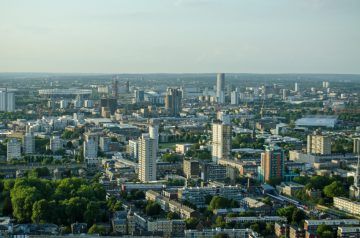Rents are Highest on Record, Says Countrywide
The average rent in the UK is now the highest on record, despite price growth slowing recently, according to the Countrywide monthly lettings index for January.
The figures show that compared to January last year, the average rent price in the UK has risen by 1.2% to £906 per month.
Although this is the slowest increase in three years, the average rent is still 12% above its pre-recession peak, hitting the highest level on record.

Rents are Highest on Record, Says Countrywide
Expectedly, London has experienced the greatest rent price growth of anywhere in the UK since 2007, with rents sitting 34% higher than their pre-recession record. Between 2007-16, the average rent in the capital rose from £966 to £1,295 a month.
Despite data showing continuous rent rises over the last nine years, most of the country has seen rents growing steadily in line with wages. The average income has increased by 12% since 2007, according to the Office for National Statistics (ONS), compared to a 12% rise in rents.
However, there is still a distinct north-south divide in the rental sector. In the North West, North East and Wales, the average private tenant is still paying less than they did in 2007 by £12 a month. Across the whole of the UK, one in five renters are paying less than they were in 2007.
But in the capital, rents have spiralled compared with wages. Incomes have only rise by 10% since 2007, while rents are up 34%, fuelled by a lack of supply and high demand. Consequently, private tenants have been forced to share, downsize or move further out of central London.
It is expected that in the three regions where rents are still below their pre-recession peaks, the average price will surpass 2007 levels by the middle of 2016. In these areas, many long-term tenants have enjoyed years without any rent increases.
In January, more landlords in the North West, North East and Wales were able to raise rent prices for tenants that renewed their contract than at any point since 2012.
In 2007, the average rent in the UK hit a record high of £809 per month. Between the end of 2007 and 2008, the average rent on a new home dropped by 11%, or £87. This took the average cost of renting down to £720 a month. It wasn’t until the start of 2010 that rents began rising again.
The Research Director at Countrywide, Johnny Morris, comments on the data: “Nationally, rents in January rose at the slowest rate since 2012, as some of the upward pressure on prices subsided and affordability limited further rises.
“Across most of London and the South East, the slowdown in rental growth is the first since 2010, where rents have been growing for the past six years.”
He explains how we can overcome affordability issues in the private rental sector: “The most sustainable way of creating a more affordable rental market in London and the South is by building more homes of every tenure. Unlike in the US, where institutional investors build homes to rent, in the UK the sector is dominated by small landlords, meaning the link between new homes getting built and the rental market isn’t nearly as close as it should be.”1
1 https://www.landlordtoday.co.uk/breaking-news/2016/2/countrywide-rents-at-highest-on-record










